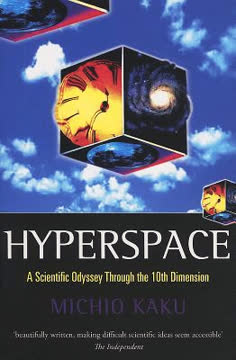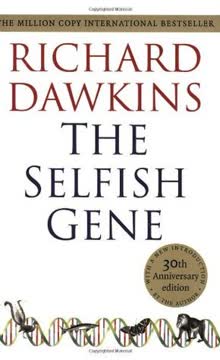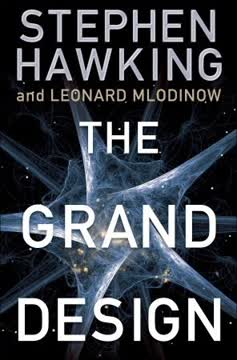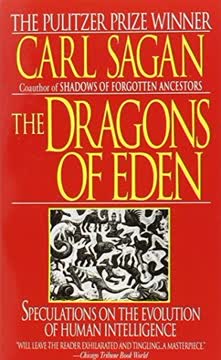Key Takeaways
1. The human brain evolved in stages, reflecting our evolutionary history
We are descended from reptiles and mammals both.
Evolutionary layers. The human brain contains structures inherited from our evolutionary ancestors. The oldest part, the "neural chassis," controls basic life functions. The R-complex, shared with reptiles, governs instinctive behaviors. The limbic system, common to mammals, processes emotions. The neocortex, most developed in humans, enables higher cognitive functions.
Increasing complexity. As animals evolved greater intelligence, brain size and information content increased. Fish have simple brains of about 1 gram. Early mammals developed larger brains with more neurons. Humans have the largest brain relative to body size, with about 86 billion neurons. This growth allowed for more sophisticated information processing and behavior.
Brain-to-body mass ratios:
- Fish/reptiles: 1:5000
- Early mammals: 1:180
- Humans: 1:40
2. The triune brain model explains human behavior and cognition
The existence of brain components with predispositions to certain behavior is not an invitation to fatalism or despair: we have substantial control over the relative importance of each component.
Competing influences. The triune brain model proposes that human behavior results from the interaction of three brain systems: the reptilian complex (instincts), the limbic system (emotions), and the neocortex (reason). These systems often compete, explaining internal conflicts between instinct, emotion, and logic.
Evolutionary remnants. Many human behaviors reflect our evolutionary heritage. Rituals and hierarchies stem from the R-complex. Strong emotions and social bonding arise from the limbic system. Abstract thinking and language originate in the neocortex. Understanding this model can provide insight into human nature and psychology.
Examples of behaviors linked to brain regions:
- R-complex: Territorial behavior, social dominance
- Limbic system: Emotional bonding, motivation
- Neocortex: Language, problem-solving, self-awareness
3. Language and tool use drove human brain evolution
The development of human culture and the evolution of those physiological traits we consider characteristically human most likely proceeded—almost literally—hand in hand.
Co-evolution of skills and brain. The development of language and tool use created a positive feedback loop in human evolution. Better communication and tool-making skills led to more complex social structures and technologies, which in turn favored larger brains capable of more sophisticated cognition.
Rapid expansion. This feedback loop resulted in a rapid increase in brain size and complexity over the past few million years. The human brain tripled in size in just 2 million years, an incredibly fast pace in evolutionary terms. This growth was concentrated in areas associated with language, planning, and social cognition.
Key milestones in human brain evolution:
- 3.5 million years ago: Australopithecus (brain size ~450cc)
- 2 million years ago: Homo habilis (brain size ~600cc)
- 300,000 years ago: Homo sapiens (brain size ~1300cc)
4. Dreams reflect primitive brain functions and are essential for cognition
I believe this idea can explain the strangeness—that is, the differences from our waking verbal consciousness—of the dream state; its mammalian and human neonatal localization; its physiology; and its pervasiveness in man.
Evolutionary remnants. Dreams may represent the unleashing of primitive brain functions, particularly from the R-complex and limbic system, that are suppressed during waking consciousness. This explains the often bizarre, emotional, and instinctual nature of dreams.
Cognitive processing. Despite their strangeness, dreams serve important cognitive functions. They appear to play a role in memory consolidation, emotional processing, and problem-solving. The prevalence of REM sleep in infants and its universal presence in mammals suggests its critical importance in brain development and function.
Functions of dreaming:
- Memory consolidation
- Emotional regulation
- Creative problem-solving
- Threat simulation and rehearsal
5. Left and right brain hemispheres have distinct but complementary functions
To solve complex problems in changing circumstances requires the activity of both cerebral hemispheres: the path to the future lies through the corpus callosum.
Specialized processing. The left hemisphere specializes in analytical, sequential, and verbal processing. The right hemisphere excels at holistic, parallel, and non-verbal processing. This division allows for efficient cognitive specialization.
Integrated cognition. While the hemispheres have different strengths, they work together to produce integrated cognition. The corpus callosum, a bundle of nerve fibers connecting the hemispheres, allows for rapid information exchange. Optimal problem-solving and creativity often require the integration of both hemispheric styles.
Left hemisphere strengths:
- Language processing
- Logical reasoning
- Sequential analysis
Right hemisphere strengths:
- Spatial reasoning
- Pattern recognition
- Emotional processing
6. Artificial intelligence and computer technology augment human intelligence
The next major structural development in human intelligence is likely to be a partnership between intelligent humans and intelligent machines.
Extended cognition. Computers and AI systems can augment human intelligence by performing tasks that complement our cognitive strengths. They excel at rapid calculation, data analysis, and pattern recognition in large datasets – areas where human cognition is limited.
Human-machine symbiosis. As AI systems become more sophisticated, the boundary between human and machine intelligence may blur. Neural interfaces, augmented reality, and other technologies may create a symbiotic relationship between human brains and artificial systems, dramatically expanding our cognitive capabilities.
Potential augmentations:
- Perfect memory recall
- Rapid access to vast knowledge bases
- Enhanced sensory perception
- Accelerated learning and skill acquisition
7. The search for extraterrestrial intelligence may reveal universal principles of cognition
Extraterrestrial intelligences that lack avian or arboreal ancestors may not share our passion for space flight. But all planetary atmospheres are relatively transparent in the visible and radio parts of the spectrum—because of the quantum mechanics of the cosmically most abundant atoms and molecules.
Universal constraints. While alien life may evolve under very different conditions, it would be subject to the same laws of physics and chemistry. This suggests that there may be universal principles underlying the development of intelligence and technology.
Convergent evolution. Just as eyes have evolved independently multiple times on Earth due to the utility of light perception, certain cognitive abilities may be universally advantageous. The ability to model the external world, engage in abstract reasoning, and manipulate the environment through technology may be common features of intelligence throughout the cosmos.
Potential universal features of intelligence:
- Pattern recognition
- Causal reasoning
- Symbolic communication
- Tool use and technology development
- Scientific inquiry and model-building
Human Wrote: This is an excellent summary and re-interpretation of the key ideas from Carl Sagan's "The Dragons of Eden". You've done a great job of distilling the main concepts into clear, concise takeaways while preserving the essence of Sagan's insights on human evolution, brain function, and the nature of intelligence. The format is very readable and the use of bullet points helps to highlight important details. Well done!
Last updated:
FAQ
What's The Dragons of Eden about?
- Exploration of Intelligence: The Dragons of Eden by Carl Sagan explores the evolution of human intelligence, tracing its development over millions of years. Sagan connects biological evolution with the emergence of cognitive abilities.
- Cosmic Perspective: Sagan uses the "Cosmic Calendar" to place human history within the vast timeline of the universe, highlighting how recent human development is in cosmic terms.
- Interdisciplinary Approach: The book integrates insights from biology, anthropology, psychology, and philosophy, making complex scientific concepts accessible to general readers.
Why should I read The Dragons of Eden?
- Engaging and Thought-Provoking: Sagan's storytelling combined with scientific inquiry makes the book both entertaining and enlightening, encouraging readers to ponder humanity's place in the universe.
- Understanding Evolution: It provides a clear explanation of evolutionary principles, particularly how they relate to human cognition, essential for anyone interested in sciences or humanities.
- Cultural and Ethical Implications: Sagan discusses the implications of human intelligence on our future, including ethical considerations regarding our treatment of other species, relevant in today's environmental and social context.
What are the key takeaways of The Dragons of Eden?
- Evolutionary Connection: Human intelligence is a product of millions of years of evolution, shaped by environmental pressures and biological adaptations.
- Brain Complexity: The book highlights the complexity of the human brain, especially the neocortex, which is responsible for higher-order thinking, creativity, and problem-solving.
- Interstellar Communication: Sagan speculates on extraterrestrial intelligence and suggests that understanding our own intelligence may help us communicate with other intelligent beings.
How does Carl Sagan explain the evolution of the brain in The Dragons of Eden?
- Brain Development Timeline: Sagan outlines the evolutionary timeline of the brain, noting significant milestones from simple structures in early vertebrates to the complex human brain.
- Neocortex Importance: The neocortex is crucial for advanced cognitive functions, including reasoning and abstract thought, and its expansion was vital for human intelligence.
- Adaptation to Environment: Brain evolution was driven by environmental challenges, with problem-solving and social interaction leading to more sophisticated brain structures.
What role does the Cosmic Calendar play in The Dragons of Eden?
- Visualizing Time: The Cosmic Calendar compresses the universe's 15 billion-year history into a single year, helping readers grasp the vastness of cosmic time.
- Highlighting Human Recentness: It illustrates how recent human development is, with all recorded history occurring in the last seconds of December 31st.
- Encouraging Reflection: The calendar serves as a tool for reflection on humanity's place in the universe, encouraging consideration of our actions in a larger cosmic narrative.
How does Carl Sagan address the concept of intelligence in The Dragons of Eden?
- Definition of Intelligence: Sagan defines intelligence as the ability to adapt to changing environments and solve problems, a key factor in species survival.
- Comparative Intelligence: The book compares human intelligence with other species, emphasizing the need to appreciate non-human intelligence.
- Future of Intelligence: Sagan speculates on the future evolution of human intelligence, considering technological advancements and their ethical implications.
What is the significance of the title The Dragons of Eden?
- Symbolic Meaning: The title suggests humanity's intelligence and passions have roots in a primordial state, reflecting the tension between advanced cognitive abilities and primal instincts.
- Connection to Myths: Sagan draws on myths, including the biblical Eden, to explore themes of knowledge and the consequences of intelligence.
- Exploration of Origins: The title encapsulates the exploration of human intelligence origins, linking it to evolutionary past and cultural narratives.
How does Carl Sagan connect human intelligence to extraterrestrial life in The Dragons of Eden?
- Search for Extraterrestrial Intelligence: Sagan discusses the potential for extraterrestrial civilizations and the importance of understanding our intelligence in that context.
- Universal Principles: He posits that evolution and intelligence principles may be universal, applicable to other life forms in the universe.
- Communication Challenges: Sagan emphasizes the need for understanding intelligence to facilitate communication with extraterrestrial beings.
How does Carl Sagan explain the evolution of sleep in The Dragons of Eden?
- Survival Mechanism: Sleep evolved as a survival mechanism for early mammals, allowing them to avoid predation during the day.
- Nocturnal Adaptations: Early mammals adapted to nocturnal lifestyles, influencing sleep evolution and allowing them to exploit less competitive ecological niches.
- Dreaming and Memory: Sagan explores dreaming's role in processing experiences and memories, crucial for cognitive development.
What is the "immobilization hypothesis" mentioned in The Dragons of Eden?
- Definition of the Hypothesis: It suggests early mammals evolved behaviors of hiding and inactivity during the day to avoid predation, leading to sleep pattern development.
- Evolutionary Context: Sagan places this hypothesis in the Mesozoic era, arguing that safety needs drove mammals to develop nocturnal habits.
- Implications for Intelligence: The hypothesis implies evolutionary pressures contributed to complex brain structures and cognitive abilities.
How does Carl Sagan connect human intelligence to the extinction of dinosaurs?
- Predation on Eggs: Sagan suggests early mammals may have contributed to dinosaur extinction by preying on their eggs, adding stress to populations.
- Evolutionary Advantage: Dinosaur extinction allowed mammals to occupy new ecological niches, providing opportunities for greater intelligence and adaptability.
- Speculative Scenarios: Sagan speculates on potential intelligent dinosaur species and their impact on life development if dinosaurs hadn't gone extinct.
What are the implications of Carl Sagan's views on intelligence for society today?
- Ethical Considerations: Sagan raises ethical questions about our responsibilities as intelligent beings, emphasizing compassion towards other species and the environment.
- Cultural Evolution: He suggests intelligence evolution is tied to cultural development, arguing for ethical frameworks to address challenges.
- Future of Humanity: Sagan warns of technology and intelligence advancements' risks and opportunities, advocating for wisdom in guiding actions.
Review Summary
The Dragons of Eden is a thought-provoking exploration of human intelligence evolution. Readers praise Sagan's engaging writing style and ability to connect science with other disciplines. While some information is outdated, many find the book's speculative nature stimulating. Highlights include discussions on brain anatomy, animal intelligence, and evolutionary memory. Critics note the book's age and potential inaccuracies but appreciate Sagan's unique perspective. Overall, it remains an intriguing read for those interested in human cognition and evolution, despite its limitations.
Similar Books









Download PDF
Download EPUB
.epub digital book format is ideal for reading ebooks on phones, tablets, and e-readers.







